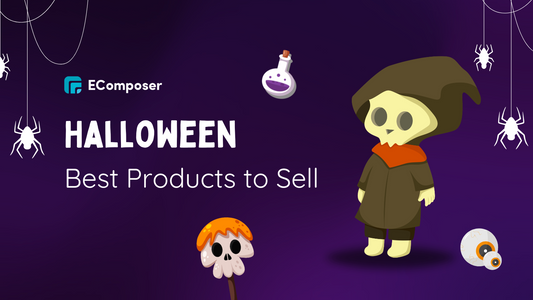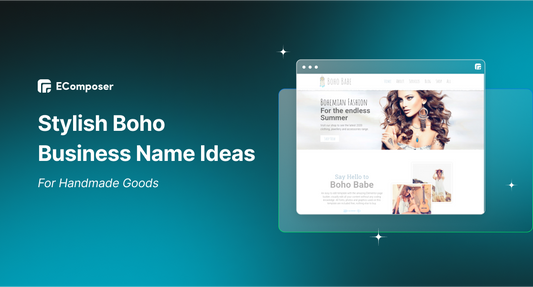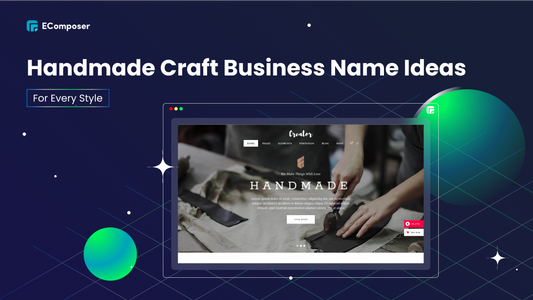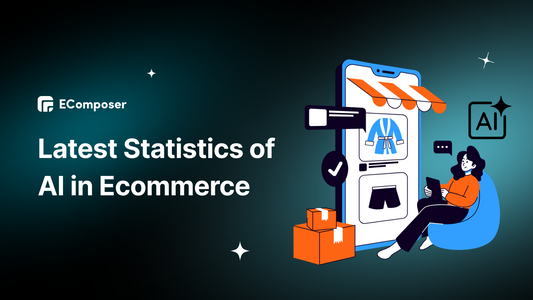How AI is changing the game in Personalized Shopping

Table Of Contents
AI is changing personalized shopping across industries like fashion, beauty, electronics, grocery, and retail. It uses recommendation engines, smart search with natural language processing, virtual shopping assistants, and visual tools like image recognition and AR or VR to match customer needs better.
Sending different emails, using a chatbot to ask what shoppers want, and suggesting a few items… Sounds familiar, right? A lot of people think they’re personalizing, but they’re actually just automating.
While you are not reaching that personalization you wish for, shoppers are getting harder to please. 81% expect personalized experiences (Forbes, 2024), and 66% will leave if they don’t feel understood (Helpscout, 2025).
This blog will bring you solutions. I’ll show you how AI is actually changing the personalization game, and how you can use AI to create shopping experiences that feel truly made for each person, not just another automated message.
What is Personalized Shopping?
Personalized shopping is a strategy to tailor each customer’s experience by showing relevant products, smart suggestions, and helpful support based on their behavior, preferences, and shopping history.
You’re scrolling through TikTok and casually watch a skincare review. A few seconds later,
- The exact product shows up right below, along with a how-to video.
- You weren’t planning to buy anything, but still clicked on TikTok Shop just to check it.
- Next thing you know, you see a full list of skincare products that match your style, your needs, and even your usual price range.
That’s Personalized Shopping, also known as e-commerce personalization.
It goes more than just throwing in a product suggestion or running a promo. There’s an entire system behind the scenes that’s learning from you: what you watch, what you like, how long you pause, where you click, how you interact with things, etc.
All of that shapes a shopping experience that feels more and more like it was built just for you and for all people in today's world.
TikTok is one of the clearest examples. According to a 2024 report from Channel Engine, 67% of TikTok users said they’ve bought a product just because they saw it on the platform, even though they weren’t planning to shop in the first place.
So personalization is not a bonus feature anymore. It’s a core strategy, and one of the biggest factors that decides whether people buy or bounce when they shop online.
Benefits of AI personalization for Shoppers & Brands
AI personalization brings better customer experiences, higher sales, and lower drop-off rates. It adapts in real time, scales easily without adding team stress, and makes shopping faster, smarter, and more enjoyable.
Personalization is nothing new. But AI-powered personalization is a whole different story. When it’s no longer a manual checklist, but driven by algorithms, data, and near-instant processing, both shoppers and brands step into a completely new playing field:
1. Better CX, higher conversion, lower churn
AI makes every visit feel like a good fit, which makes shoppers buy faster. According to Penfriend.ai (2024), AI generates around 2.5 quintillion bytes of highly personalized content every day, helping businesses increase their sales conversion rates by up to 30%.
2. Real-time adaptation to buyer behavior
AI detects changes in behavior while the customer is still browsing, and adjusts content, product suggestions, and offers in real time. Allied Business Academies reports that businesses using AI react to customer behavior x5 faster than traditional methods.
3. Scalable personalization without team overload
Instead of needing a huge team to manage hundreds of customer segments, AI makes it possible to personalize for millions of people, each getting a unique experience. Gartner even predicts that by 2029, 80% of personalization efforts will be handled by AI without manual work.
4. Smarter, faster shopping journeys for customers
Customers don’t have to scroll for 20 minutes just to find what they need. AI shortens the path by offering the right product at the right moment. Hellorep.ai (2025) found that AI-driven personalization can help shoppers complete purchases 47 percent faster than usual.
Those are the most visible benefits that can be easily seen among all brands and customers; there are thousands more that AI can do. Let’s find out how to personalize shopping with AI in the next part.
As you explore ways to use AI personalization, remember that even the smartest tools work best when your online store is ready to turn visitors into buyers. Shopify helps you do this with features like Shopify Sidekick, which creates content for you, and the AI Theme Block, which helps design your store layout easily.
Want to give it a try? Shopify’s $1 offer lets you test any plan for 3 full months.
It’s a simple way to start, even if you’re just exploring your options.
Grab $1 Deal Now!How AI is changing the game in personalized shopping
AI personalization brings better customer experiences, higher sales, and lower drop-off rates. It adapts in real time, scales easily without adding team stress, and makes shopping faster, smarter, and more enjoyable.
1. Recommendation engines
If we talk about AI in personalized selling without mentioning the Recommendation Engine, it would be a major omission. This was once considered the secret weapon of giants like Amazon or Netflix. But today, even mid-sized and small brands can also, too.
So what exactly is a Recommendation Engine?
It is an AI tool that learns from user behavior, what they click, what they view, what they purchase, and where they drop off, then predicts their next move and delivers suggestions so accurate.
Behind every “coincidental but timely” suggestion is a complex data processing system: machine learning, behavioral clustering, predictive analytics, and precise display triggers. The best part is that AI does not need you to teach it line by line. It learns directly from customer behavior.
Here’s a simple example: customer A just looked at a blue dress shirt.
- The system identifies that users with similar behavior usually add beige khakis and loafers within the next five minutes.
- The system doesn’t wait. It instantly suggests that combo.
- It feels more natural, works more efficiently, and significantly increases the conversion rate.
Looking at the market today, there are two groups using Recommendation Engines:
- Large platforms like Shopify, BigCommerce, and Adobe Commerce integrate recommendation features as part of their broader ecosystem, often with high costs and complex setup requirements.
- Specialized apps like LimeSpot, Wiser, Recom.ai, or even Tidio (Lyro AI) focus on doing one thing really well, suggesting the right product at the right time. Their interfaces are simple, A/B testing is easy, and personalization adjusts with every session.
The shift is clear: while major players are trying to centralize every feature into one platform, niche-focused Recommendation Engine providers are earning the trust of smaller businesses, because they are easier to use, faster to implement, and much more affordable.
At the core, Recommendation is a tool that helps brands deeply understand their customers, their habits, context, and trends, and deliver suggestions with real value.
2. Smart search and NLP
If the Recommendation Engine is the “clever suggester,” then Smart Search, combined with NLP (Natural Language Processing), is the one who “understands what you are thinking.”
In the past, the search box on websites could only recognize exact keywords. If you misspelled a word, left out an accent, or typed a long phrase and it would give up. But with NLP, AI not only understands what you write, it also understands the intent behind it.
This technology is now being widely adopted by Shopify apps like Searchanise, Doofinder, and Klevu, as well as AI Assistants like Manifest AI. They’re entire AI systems that learn context, related keywords, offer suggestions as you type, and handle natural language queries like:
- “Crossbody bag for women under 500k”
- “Birthday gift for girlfriend who likes skincare”
- “Men’s summer wrinkle-resistant shirts”
NLP also allows customers to search with voice, this empower even higher AI understands every part of the sentence: the purpose, budget, audience, season… then filters results based on all that, not just matching the words “bag – women – 500k.”
A good example: Klevu, one of the leading Smart Search tools, helped a bedding & bath brand increase sessions with search by 35%, simply because customers found exactly what they were looking for.
A search bar is a bottleneck that kills customer experience. In the age of hyper-personalized shopping, that’s how you show you’re truly listening at the AI level. And that’s what makes your brand memorable because the experience is so smart.
3. Virtual shopping assistants
Back in the day, when you walked into a fashion store, a friendly staff member would greet you with a smile: “What are you looking for?” Then they’d help you mix and match, suggest what’s new, even throw in a promo you didn’t know you needed. That feeling? AI can now recreate it on your website, your app, even in your Facebook inbox.
That’s what we call an AI Virtual Shopping Assistant – a digital sales assistant that works 24/7, doesn’t need lunch breaks, and never gets annoyed with picky customers.
But unlike old-school chatbots that stick to a script, today’s AI Assistants are trained to understand context, follow behavior patterns, remember purchase history, and make smart suggestions at the right time. For example:
- Customer just browsed running shoes > Suggest sport socks or a gym bag
- Customer previously abandoned cart near the month-end > Offer a “birthday discount just for you”
A lot of small shops still think, “Why bother with a virtual assistant? Customers can find things themselves.” But here’s the truth: shoppers who get guided buy more than those who have to figure it out alone. That’s why big brands are investing heavily in AI chatbots, Messenger bots, and even AI voice generators.
If you want to do more than just “list products and wait for orders” and instead actually interact, guide, and convert your customers, this is the first tool you need to implement. AI is not just for big brands anymore; it’s now the weapon for anyone who knows how to use it right.
4. Visual recognition & AR/VR
(Source: Maybeline #LiftMyMoode Virtual reality swatch lipstick)
One of the biggest barriers in e-commerce is this: “I don’t know what it’ll look like when I wear it, use it, or place it in my home.” And this is where AI, Visual Recognition, and AR/VR step into the picture.
Visual Recognition is when AI can “see” the image a customer uploads (like TikTok and Shopee), a shirt, a piece of decor, a hairstyle, and instantly find similar products. Snap a photo of your friend’s shoes? AI suggests a matching pair available in your store; there is no need to type long, awkward keywords anymore.
Then there’s AR/VR – the tech that lets people “try before you buy” through a camera. Try on glasses on your face, lipstick on your lips, or place a virtual sofa in your living room – without leaving your chair. Maybeline, Sephora, and L'Oréal have been doing this for years. And now, even small shops can offer the same experience with lightweight web-based AR that doesn’t require an app.
Don’t think of this as some fancy tech extra. This is how you reduce return rates, increase instant purchases, and most importantly, create a real “wow” factor in the shopping experience.
*Friendly reminder: the feeling of trying is the feeling of owning. And that’s one of the strongest nudges to get someone to hit “Buy now.”
AI in action: Use cases & examples across industries
Real brands are already winning with AI personalization: Zalando uses it for personalized lookbooks, Sephora matches products to skin types, Microsoft guides buyers with quizzes, and smart shelves in retail predict demand. These are proofs that AI can actually meet each demand with precision.
1. Fashion: Personalized lookbooks and sizing
(Source: AI Nike Fit)
When you run an online fashion store, you’ve probably noticed how shoppers browse product after product. But clicks alone are not enough to satisfy them. That’s where AI steps in and takes personalization to the next level.
Instead of a generic catalog, AI helps turn casual browsing into a truly tailored experience:
- One way it does this is through personalized lookbooks. Think of it like giving each shopper their own digital stylist, suggesting outfits that match their personal style, favorite colors, current weather, and even their mood.
- It goes deeper with sizing, too. Brands like Nike are already using AI Nike Fit, which scans the customer’s foot to recommend the most accurate shoe size, down to the millimeter. It helps cut down on sizing mistakes and return rates.
Zalando is also leading the way. Their AI tool, Algorithmic Fashion Companion (AFC), curates outfits based on each shopper’s style. As a result, their average order value went up by 40%, and profits jumped by 87% in Q2 2023.
Here’s how it works in practice: AI looks at a customer’s shopping history, style preferences, and behavior on-site to build a personalized outfit guide.
In short, AI becomes a smart shopping assistant, guiding the customer to the right outfit, the right size, and the right time, making them feel understood and taken care of. And you’re creating a smarter, easier, and more thoughtful shopping experience.
2. Beauty: AI skin analysis and product matching
(Source: Sephora AI Skin Scan )
If the beauty industry used to rely just on subjective feelings (“What’s my skin type?”, “Will this product suit me?”). Today, AI is turning the entire product selection process into something surprisingly scientific.
From skin analysis using cameras to AI-powered personal consultation chats, the cosmetics industry is undergoing a remarkable shift: customers are no longer blindly guessing but are being guided based on data, from objective analysis to tailored recommendations.
There are two technologies behind this transformation:
#1. AI skin scan: Uses a smartphone camera or webcam to scan the face and analyze texture, tone, moisture, wrinkles, dark spots... The results are almost instant. AI uses computer vision and training data from millions of real skin images to compare and suggest treatment.
#2. AI chat advisor: Based on user behavior (what they click, type, or ask), the chatbot adjusts its tone, information, and recommendations, just like a real beauty consultant.
The strength of AI is that it does not just look at one factor but pulls from multiple sources: age, skin condition, local climate, purchase history, current skincare routine... all to create the most personalized regimen possible.
Here is a real case: Sephora AI Skin Diagnostic Tool lets users upload a selfie and answer a short quiz. The AI can identify over 30 skin concerns and recommend products accordingly. Shoppers who use the tool are 35% more likely to convert, and return rates drop.
You know, skin is a sensitive thing. And if it’s not just cosmetics, then it naturally falls into the territory of healthcare. So to truly convert these vulnerable consumers, you need to give them reasons, real knowledge, and reliable solutions: clear ingredients, proper skincare guidance, proof from real cases, certifications, and expert backing...
An AI chatbot can support showcasing all of this instantly. If a customer asks, you can begin with that simple task before anything else.
3. Electronics: Guided quiz-based product discovery
In the electronics industry, shoppers often feel… lost because they simply don't know what to choose. Take laptops, for example. There are hundreds of models with different CPUs, RAM, GPUs, screen sizes, and price points. It's overwhelming. This is where AI-powered quizzes step in, acting like a smart advisor who knows exactly what to ask and what to recommend.
- The AI behind them collects what's called zero-party data, meaning customers willingly share their preferences, things like usage needs, budget, and habits.
- Then the AI uses contextual intelligence to process that input and match it with your product database, taking specs, reviews, and user fit into account to offer truly relevant suggestions.
Over time, the AI gets smarter. It learns from how people answer and what they end up buying. After a few thousand sessions, its recommendations can be more accurate than those of an experienced salesperson.
This is especially useful when selling high-value items like phones, laptops, or cameras, where customers often need more confidence before making a purchase. The quiz gives them that confidence, and it saves your team time too.
A real-world example: Microsoft launched an AI quiz called “Laptop Finder” using the Zoovu platform. After rollout, they saw a 29% increase in conversion rates and fewer returns, because people were buying products that actually fit their needs. The quiz was simple, smart, and visually engaging, making it feel more like talking to an expert than clicking through a robotic chatbot.
4. Grocery & Retail: Smart shelves and behavior prediction
In retail, especially in supermarkets and convenience stores, AI's real power lies in smart shelves combined with behavior prediction. The moment a shopper walks in, AI picks up on what they’re likely looking for and recommends the right product at the right time.
What are Smart Shelves? Smart shelves are equipped with sensors, cameras, or RFID. When a customer interacts with a product, the system takes note. (It can be both online & offline)
- It tracks how long the item is held, how often it’s picked up, and even how many times it’s been looked at.
- If something is almost out of stock or constantly being touched but not bought, the system can trigger a restock alert or suggest moving the item to a better spot.
- It even adjusts nearby digital signage ads or sends app-based offers based on how engaged the customer seems with a particular item.
AI looks at past shopping patterns: what each customer usually buys, on what day, how often they return, and what types of items they’re interested in (like vegetables, drinks, or condiments). From there, it makes timely predictions.
For example, if someone often buys yogurt after lunch midweek, the system might send them a yogurt coupon at 11:30 a.m. to catch them just before they shop.
A real example from the field: Harvard Business Review shared how Kroger, a major grocery chain, used smart shelf tech and behavior prediction to power around 500 billion product recommendations for 23 million digitally active households, making online shopping about 4.5 times faster and more relevant (Forbes, 2024).
Others also read
- 14 Best AI Product Description Generators That Businesses Must Try
- Guide to create a Shopify Store with AI (+Tools Recommendation)
- 10 Real-Life Examples of AI in eCommerce
Key technologies behind the scenes
Behind the scenes, AI personalization runs on machine learning, NLP, and computer vision. It learns from real user data while respecting privacy and ethical rules to build smart, trusted systems.
When you see AI recommend exactly what a shopper needs, predict when they’re likely to return, or even detect oily skin through a camera, there’s a whole tech ecosystem working closely behind the scenes to make it happen.
1. Machine Learning, NLP, Computer Vision
- Machine Learning (ML): This is how AI learns from data. The more it runs, the smarter it gets. ML helps AI understand customer behavior, segment users, and predict future actions.
- Natural Language Processing (NLP): This enables AI to understand human language. Chatbots that respond naturally, smart quizzes, or automated review analysis are all powered by NLP.
- Computer Vision: This is AI’s “eyes.” It helps analyze skin types, recognize products on shelves, detect faces, and track movement inside stores.
2. First-party data, zero-party data, and AI training sets
- First-party data: This refers to customer behavior collected directly from interactions with your website, app, or services, like clicks, views, or purchases.
- Zero-party data: This is information users voluntarily provide, such as answers from quizzes or survey responses. It's highly accurate and transparent.
To perform well, AI models need large training sets, labeled data like "oily skin should be recommended Product A" or "budget under 10 million should suggest Device B." If you want good AI results, you need clean, relevant data to feed it.
3. Privacy & ethical considerations
AI should not act like an invisible spy. You need to be transparent about what data you collect, how you process it, and what it’s used for. Let customers know you’re using data to improve their experience, and always give them the choice to opt out.
Be careful not to let AI cross the line. Avoid misusing it in ways that feel invasive or unfair, like dynamic pricing that charges wealthier customers more. Ethical boundaries must be clear and respected.
Top AI personal shopping assistants for business
There are top 3 tools leading the way in AI shopping assistants: Tidio’s Lyro AI for instant chat support, Shop.app for personalized recommendations, and Manifest AI for tailored store experiences that feel human.
A shopping assistant powered by AI is your 24/7 sales team lead. It helps suggest products, guide shoppers, and keep them engaged, making your job easier while still boosting revenue.
1. Tidio (Lyro AI)
Tidio combines both live chat and Lyro, an AI agent that suggests products based on customer behavior and what’s already in their cart. It automatically connects with your full product catalog and updates stock or pricing changes in real time.
Lyro can answer up to 70% of customer questions on its own. It uses natural language processing and learns from your FAQs and support docs, which helps reduce pressure on your support team.
Pricing starts at free. The Starter plan is around $29 per month, and you can scale up to Growth or Plus plans when needed.
Best for: Small to medium-sized stores that need easy-to-use AI chat, product suggestions across multiple channels (web, Messenger, WhatsApp, Instagram), and affordable pricing.
2. Shop.app
(Source: Value Added Resource)
Shop.app is Shopify’s own mobile app that lets customers shop directly and get personalized recommendations from brands they follow. According to Reddit users, Shop.app provides helpful product suggestions, order updates, and sales notifications. However, its integration with custom catalogs can be a bit limited.
Best for: Brands already in the Shopify or Shop.app ecosystem, especially those wanting to reach loyal customers in a simple, mobile-friendly way, especially on iOS.
3. Manifest AI
Manifest AI is a professional-grade assistant built on GPT‑3.5, designed specifically for Shopify stores. It offers 24/7 chatbot support, interactive quizzes, smart product recommendations, advanced search, and AI nudges. Everything is powered by your store’s own data and customer behavior.
Real results show it can double conversion rates, increase add-to-cart actions by 2x, boost average order value by 25%, and handle 95-97% of customer inquiries without human help.
Best for: Mid to large Shopify brands looking for a high-performance assistant with multilingual support, custom chat tones, and deeper recommendations to increase AOV and reduce support workload.
Here’s a natural-sounding English rewrite of your content without using overly informal symbols or marks, and keeping it human and clear:
|
Assistant |
Key Strengths |
Who It’s For |
|
Tidio (Lyro) |
Auto product suggestions, multi-channel chat, and affordable |
Small to mid-size shops that want simple, effective automation |
|
Shop.app |
Native Shopify integration, intuitive experience |
Brands already using Shopify, looking for mobile convenience |
|
Manifest AI |
Deep personalization, multilingual, proven conversion boost |
Growing Shopify stores need smarter AI with high ROI |
Choosing an AI shopping assistant is just the first step. What really matters is activating your data, learning from your customers, and adjusting to your sales strategy.
Considerations when using AI in personalized shopping
There are 3 key points to keep in mind when using AI in personalized shopping: protect customer data, personalize without crossing the line, and always use high-quality data because smart tools need smart input to work well.
AI-powered personalization sounds impressive, but if things are done carelessly, then it can make customers uncomfortable, erode trust, or even violate data laws. Here are three critical things to consider when bringing AI into your online shopping.
1. Data privacy concerns and solutions
AI needs data to learn, but customers expect transparency. Always explain what data you’re collecting, how you’re using it, and give people the choice to opt in or out. Choose AI tools that follow privacy standards like GDPR, CCPA, or your local regulations. It protects both your customers and your business.
2. Avoid going so personal that it feels unsettling
Suggesting the perfect product is great until it feels like you're watching someone too closely. If timing or tone is off, your message may come across as intrusive. Let AI act like someone who gets what the shopper needs, not someone lurking in the background. Use behavioral cues and deliver messages in the right context and channel.
3. Data quality matters: bad input leads to bad output
Messy or inaccurate data leads to irrelevant recommendations. Don’t let AI learn from incorrect labels, broken products, or bot behavior. Make sure your tracking is set up correctly, clean your data regularly, and filter out spam so the system learns from real customer behavior.
AI is a powerful assistant, but it still needs a human in the driver’s seat. The businesses that find the right balance between tech and human understanding will lead the way in the age of intelligent personalization. Quick reminder: stay careful, but don’t fall behind.
Final thoughts
AI personalization is quietly reshaping how people discover, shop, and connect with brands. From product recommendations to personalized emails and smarter search results, AI helps retailers create experiences that feel more tailored, more relevant, and more human.
But the real winners will be the brands that use this technology not just to sell better, but to serve better. In the end, personalization powered by AI should feel less like a machine guessing and more like a brand that truly understands you.
FAQs
1. Can I add AI personalization without coding?
Yes. Many AI tools today are built for non-tech users. Platforms like Bubble, Glide, and Formaloo offer plug-and-play features that let you personalize product recommendations, emails, or pop-ups without writing a single line of code.
2. How does AI personalization affect customer privacy and data security?
It depends on how you handle data. AI needs information to personalize, but it’s your job to keep it safe. Be transparent, give users control over their data, and choose tools that follow privacy laws like GDPR or CCPA.
3. Are there free AI tools for personalization in shopping?
Yes. Some tools offer free plans or trials to get you started. For example, EComposer has built-in AI features, and platforms like Grok or ChatGPT can also help with basic personalization if you know how to set them up.






















0 comments